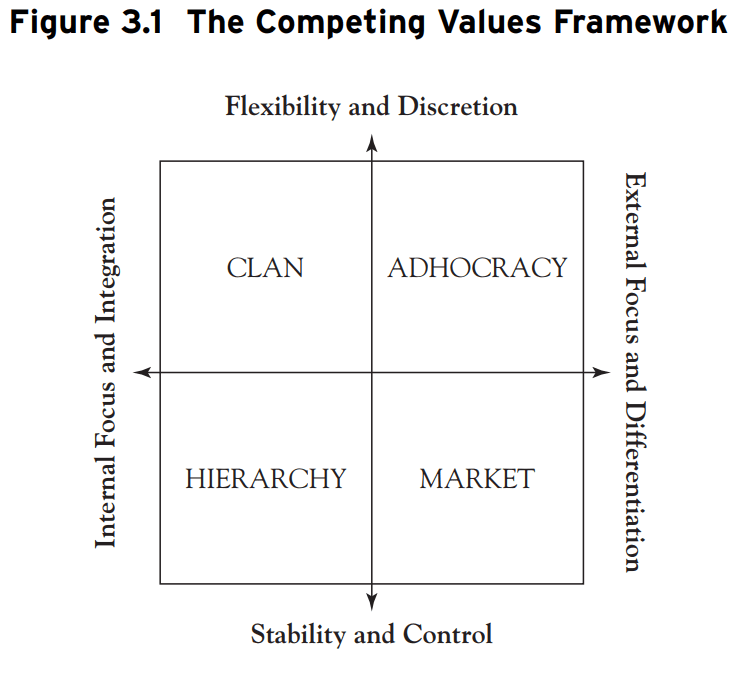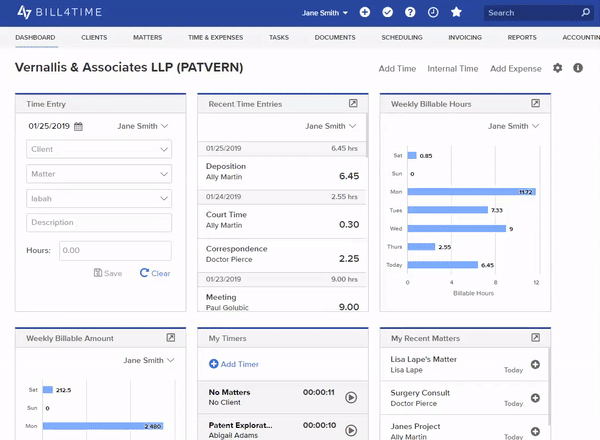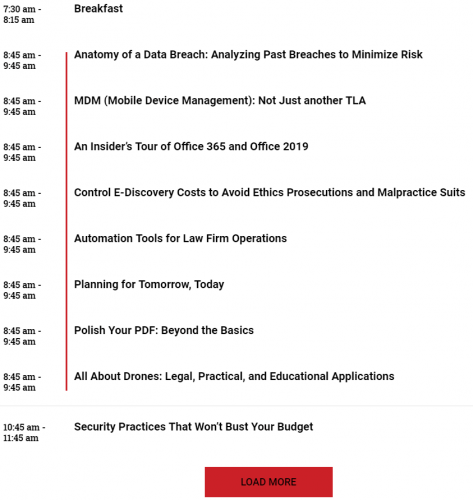
We’re not paying for that. It’s 2016 and BigLaw firm Cravath, Swaine & Moore has decided to adjust their attorney compensation model and increase the salaries of their first-year associates from $160,000 to $180,000. Eighth-year associate salaries were increased to $315,000. What caused this? Cravath associates brought the issue of base salaries up at a town hall meeting.
It was reasonable.
Associates were struggling to keep up with student loans and the high cost of living in a large city like New York.
Clients were unhappy with associate raises
It isn’t because clients are miserly or greedy.
Not at all.
It’s because these sophisticated clients are able to read between the lines. After Cravath’s announcement, other firms followed suit in a kind of soft salary arms race. Milbank, Tweed, Hadley & McCloy decided to increase first-year associate salaries to $190,000.
Clients responded negatively.
David Leitch, Global Counsel, Bank of America had this to say about these salary increases:
“While we respect the firms’ judgment about what best serves their long-term competitive interests, we are aware of no market-driven basis for such an increase and do not expect to bear the costs of the firms’ decisions.“
In other words, we’re not paying for that.
You’re probably not surprised.
What is surprising is the fact that this salary arms race isn’t doing much to stem the flow of associates leaving firms large and small. Research shows the reasons for this mass exodus have remained the same (relatively speaking) for the last 20 years.
Associates leave because they…
- Don’t have the training and mentoring they need. Associates are looking for classroom training, mentoring from senior associates/partners and hands-on, one-on-one training.
- Don’t have consistent, substantive feedback. Associates want clear and actionable feedback they can sink their teeth into. These associates receive cookie cutter feedback (via their year-end review) that doesn’t give them much to work with “i.e. you’re doing great!”
- Don’t have the career opportunities they need. Attorneys are looking for career advancement. They’re looking for ways to make an impact, add value and push their career forward. The problem at most firms is the fact that attorneys aren’t getting the chance to move forward in their careers.
At first glance, it seems as if the issues above are separate from compensation.
But are they?
To find the answer, we’ll need to look at the history of attorney compensation.
How were attorneys compensated in the past?
Early in our country’s history things were different. According to John Leubsdorf author of Toward a History of the American Rule on Attorney Fee Recovery,
“legislation provided for fee recovery as an aspect of comprehensive attorney fee regulation in the late colonial period.“
Attorney fees were, at one time, highly regulated.
In the eighteenth century, most of the colonies regulated attorney fees by statute. These statutes dictated the fees an attorney could charge their clients and the fees that could be recovered from a defeated opponent in court.
This wasn’t about responsibility.
This legislation wasn’t about shifting the responsibility for fees from one party (clients vs. defeated opponents) to another. It was about limiting the fees an attorney could collect. It’s no surprise then that fees were unreasonably low for attorneys.
Why rely on legislation though? Leubsdorf explains:
“Commentators have usually ascribed this legislation to unreasonable anti-lawyer hostility, and there is no question that hostility to lawyers existed. Fee regulation, for instance, often followed attempts to ban lawyers entirely.’ Sometimes attacks on lawyers reflected hostility to their links to the government, or later to their mercantile clients. But hostility may not have been a necessary cause of regulation; colonial legislatures regulated many parts of the economy.“
Here’s the interesting part.
At this point, attorneys were quasi-public servants; their fees were very similar to the fees paid to court clerks.
“Members of both groups were in part public servants and in part private entrepreneurs. Both performed duties essential to the operation of the courts, and were, at least in theory, regulated by judges. But lawyers and clerks were also in business for themselves. Clerks at that time bought their offices and lived on their fees’ -and both were careful to collect fees for each item of service.“
Naturally, attorneys were unhappy.
Their attorney compensation model was far too low. However, courts weren’t all that interested in justifying the low level of attorney fees included in court costs.
Cue The American Rule.
Lawyers would eventually achieve a compromise. They challenged legislative limits on what they could charge their clients, winning the right to bill and collect whatever the market would bear. These compensation developments led to contingency fees and other alternative fee arrangements.
Why attorney compensation models help shape your future success
It’s an important question.
Why do compensation models matter to attorneys/firms? Because it’s a clear indication of value.

Specifically the question,
“What do you value?“
Remember Howard A. Levitt?
He’s the employment attorney who abandoned his prized $200K Ferrari in rising flood waters so he could make it to a hearing on time.
This is legendary service to everyone except attorneys. Their automatic response according to Sam Glover is something along the lines of “duh.” When your clients hire you to handle their matter they get all of you.

Obviously.
Levitt’s actions showed he cared more about his client’s concerns. He was more focused on the advocacy than he was on his personal details. He fought through exigent circumstances to deliver exceptional results for his clients.
Which is why he’s paid well.
What does that have to do with compensation? When you take on a client’s matter they get all of you. When an employee joins your team they should get all of you.
Do they?
Do attorneys get all of you when they join your firm? The honest answer for most other firms is No. Most attorneys aren’t paid well enough to handle the heavy load that’s placed on their shoulders.
Meaning what exactly?
- Attorneys are actually underpaid. Research tells us consistently that attorneys aren’t receiving the pay they deserve due to factors like downward pressure on firm realization rates, write-downs, write-offs and
- Attorneys aren’t receiving the opportunities they need. Attorneys of all stripes (solo, small, medium and large) are getting bogged down by the work itself, but they’re looking for career advancement and growth, the light at the end of the tunnel.
- Attorneys aren’t getting the guidance and feedback they need. Criticism, advice, mentoring – they’re all falling by the wayside as firms are fighting to survive the shifting legal landscape.
This is the reason turnover at firms hovers at a sobering 44 percent attrition after three years. Compensation is actually part of a bigger problem.
Engagement.
Your firm needs the right attorney compensation model
The model that gives them all of you.
According to Michael Anderson, author of Partner Compensation, the vast majority of compensation models fall into seven basic categories.
- Equal partnership
- Lock step
- Modified Hale and Dorr
- Simple Unit
- 50/50 Subjective-Objective
- Team Building
- Eat What You Kill
1. Equal Partnership model
In this compensation model, law firm profits/bonuses are divided equally among a defined group of partners (or associates). Let’s say you’re part of a firm with 12 partners and net profits of $4 million. If the profits are divided equally each partner would receive $333,000. This compensation model is common in smaller firms.
This model relies on an assumption.
Each of the recipients in your firm contributes equally.
Strengths
The larger the pool of profits, the larger the potential payout is for any individual partner. What does this mean? The financial well-being and profitability of the firm is the primary concern. This model is effective because it enables firms to compensate for performance swings (e.g. good years and bad years) on an individual partner’s record.
It’s perfect if your firm relies on a tight-knit clan culture.
If you hate competition and the cutthroat nature prevalent in many firms, an equal partnership may be the ideal motivator for your team.
Here’s why.
This compensation model shifts the firm’s focus from how am I doing in my firm to how are we doing compared to other firms.
Weaknesses
This model has a major flaw.
Price’s law.
Derek J. de Solla Price made a significant discovery. He discovered that 50 percent of the work is done by the square root of the total number of people who participate in the work.
Meaning what exactly?
Value creation isn’t symmetrical. If you have 100 attorneys in your firm, 10 of them will produce 50 percent of the results or outcomes.
Equal partnership can work well if attorney skill sets and functions create a kind of overlap in the firm. Everyone does what they’re good at but specific attorneys handle specific matters.
And, if there is no skills overlap?
Top-performing associates and partners may be mistreated and overworked. They may choose to leave for greener pastures. They’ll seek out firms with merit-based compensation models. If this happens, it makes it more difficult for firms to retain top performers.
2. The Lockstep model
This compensation model relies almost entirely on seniority. The longer an attorney/partner stays with the firm the more compensation (e.g. salary, bonuses and incentives) they will receive. In this model, income is divided along seniority lines or levels (e.g. junior partners, middle partners and senior partners).
Strengths
This model relies on loyalty and kind of creates golden handcuffs. Once attorneys are locked in, few are willing to give up the seniority, the rewards they’ve accumulated and leave.
Like an equal partnership, the lockstep fosters internal unity and encourages external competition. This is due to the fact that there’s really only one way to increase individual incomes.
Make the pie bigger.
There’s no financial upside to client poaching or file hoarding, so everyone, partners, associates and support teams, work well together.
Weaknesses
Price’s law is a problem for the lockstep model as well. In fact, the lockstep model often de-motivates attorneys from working harder. Why work harder than necessary if your compensation will continue to climb/progress?
It gets worse.
Younger attorneys may feel a great deal of resentment towards their elders. In their mind, it seems unjust that older attorneys command the lion’s share of firm profits, especially when these older attorneys produce a steadily decreasing amount of work.
It’s a fair objection.
Left unchecked, this compensation disparity may lead to a mass exodus of young talent from the firm. Younger attorneys may strike out on their own or move towards firms with merit-based compensation models.
3. Modified Hale and Dorr model
In the 1940s, Hale and Dorr created the first incentive-based compensation scheme. The firm divided partners into three categories.
- Finder, the rainmaker who brings in the client.
- Minder, who’s responsible for managing the client.
- Grinder, the partner/associate who’s responsible for doing client work.
Here’s how compensation is broken down.
In addition to a base salary, contributing parties would receive a predetermined percentage of the profits in exchange for the work that’s done. This would be negotiated ahead of time and would depend on the level of difficulty, involvement and so on.
Here’s an example:
- 20 percent of profits to finders
- 20 percent of profits to minders
- 40 percent of profits to grinders
- 10 percent to support teams
- 10 percent to a discretionary pool for top performers who go above and beyond
This could be used in combination with other compensation systems like a monthly bonus pool or team building system. The idea here is that it’s directly opposed to an eat-what-you-kill compensation system.
Strengths
The modified Hale and Dorr model rewards individual contributions, decreasing the emphasis placed on firm performance overall. The assumption with this model is that everyone will be adequately motivated by the compensation model to perform.
Attorneys know exactly how to increase their income.
This compensation model is preferable for many attorneys because it gives them a significant amount of control over their financial future. Using personal goals as a guide, attorneys are able to increase or decrease performance appropriately.
- If an attorney prefers to spend more time with their children while they’re young they can decrease their performance/output.
- If that same attorney later decides to increase performance dramatically to pay for their children’s education they can ramp up.
This model improves team camaraderie decreasing bitterness and resentments that come with other performance-based models. It also avoids the animosity that comes with profit-sharing.
Weaknesses
This model promotes individuality. Under this model, attorneys are focused on their individual output and less inclined to help their peers and subordinates. Under this model, partners are incentivized to focus exclusively on billable work.
Alienation is a common side effect.
Team-building and collegiality tend to fall by the wayside. To complicate things further, partners tend to hoard files, clients and work. Unsurprisingly, these behaviors create resentment and animosity between partners. Junior partners feel they aren’t getting enough work (or the work is of dubious quality). Senior partners work to protect what’s theirs.
4. Simple Unit model
The simple unit model focuses on seniority but also rewards production, rainmaking and nonbillable work. This compensation model uses a straightforward and objective calculation to reward attorneys in the firm.
For example:
- One point for each year with the firm
- One point for $X of production (fees billed or received)
- One point for $2x of rainmaking
Points are awarded on the basis that the total number of points is 3x the number of attorneys/partners. These points are allocated on the pro rata basis using the number of billable/non-billable time recorded.
These points are converted to a percentage.
This percentage is then applied to the firm’s net profit for the fiscal year. This figure is a partner’s individual income. The simple unit model is similar to the Hale and Dorr model. The focus is on individual production but the results are measured in an objective and verifiable way.
Strengths
The simple unit formula is named for its overall simplicity. It’s a straightforward calculation attorneys in your firm can use to calculate the income they’ll receive. This model uses seniority and atypical factors like nonbillable time to arrive at an objective figure.
Similar to the Hale and Dorr model, attorneys know exactly how to increase their income.
Weaknesses
The simple unit model deals with the same challenges and concerns present in the Hale and Dorr model. An (over) emphasis on individuality, a narrow focus on billable work and file, client and work hoarding.
Resentment and animosity are common.
Instead of focusing on the firm as a whole, attorneys work to protect what’s theirs, becoming a kind of legal mercenary in the process.
5. The 50/50 Subjective-Objective model
This model uses the subjective and objective components of legal work to produce a compensation model that’s fair. The objective part of this model is based on hard (objective) metrics. These metrics are used to determine attorney/partner income:
- Billables
- Collection realization rates
- Receipts
These metrics typically comprise 40 percent of attorney/partner income. Another 10 percent of these objective details are based on rainmaking and utilization statistics.
- Leads generated
- Client generation
- Utilization
This isn’t a comprehensive list. These metrics and percentages aren’t etched in stone. Firms can and do change these details. They’re varied according to an individual firm’s goals, preferences, vision and expectations.
What about the subjective details?
Another 10 percent of the (subjective) portion is based on an individual attorney’s rainmaking and/or client handling abilities. Another 40 percent (still subjective) is based on the perception of all criteria overall.
Strengths
The subjective portion of this compensation model (40 percent) has an undefined share of income. This is a very good thing because it can be used to reward any sort of unusual, over-the-top or exceptional non-billable performance. Firm management, training or mentoring junior attorneys, rainmaking and even intangible details like kindness and individual contribution.
When it’s used well, the subjective portion serves as a kind of partner evaluation.
Weaknesses
Remember the subjective details?
It’s a two-edged sword.
That same 40 percent can be used to punish attorneys/partners who aren’t perceived as a positive contributor or asset to the firm even though their objective numbers are excellent. It’s in a partner’s best interest to cooperate, to politick, to play the social game.
Why?
Because 40 percent of their income will be based on their peer’s perceptions of their overall contribution to the firm.
- File, client and work hoarding
- Ignoring firm initiatives
- Placing unreasonable demands on staff and juniors
- Ignoring firm policies
- Or simply being difficult
These negative factors may be taken into account and used to punish poor performers.
6. Team Building model
With this system, individual performance takes a back seat to the firm’s performance. Fifty percent of a partner’s income would be based on the firm’s financial health and performance. Forty percent would be based on a practice group or departments performance. Finally, ten percent would be based on individual performance.
Here’s the beauty of this compensation system.
It can be extended out to support associates and support teams. Practice groups and departments set goals and KPIs. Partners, associates and support teams are rewarded when goals are met.
This system is all about cooperation.
The metrics can be any number of things, utilization, realization, productivity, non-billable work, etc. Anything that brings teams together and produces value for the firm overall.
Strengths
This compensation model is perfect for clan cultures. It’s also simple and easy to employ. Attorneys are encouraged to focus on ensuring the firm, practice groups and departments are all performing beautifully.
There’s almost no pie splitting animosity.
This compensation model is completely objective, downplaying the role of individuals. The firm, practice groups and department leaders sink or swim depending on their collective performance.
It builds a team.
It encourages staff to put team goals ahead of individual goals. It promotes a team-oriented mindset. When we work together everyone wins!
This model fosters:
- Cooperation and collaboration
- Collegiality at the department, practice group and firm level
- Trust in one another to act in the best interests of the team
This compensation model eliminates individualistic tendencies (e.g. file, client and work hoarding). It encourages delegation, provides better value to clients, better training for juniors and greater job satisfaction all around.
Done well, it boosts group and firm profitability dramatically.
Weaknesses
Surprisingly, Price’s law is also a concern here. A small segment of each department or group will always produce a disproportionate amount of work. If there’s a skills overlap (via partners) this can be circumvented or avoided completely.
Individualists may struggle with frustration.
Individual contributions don’t play a key role in this compensation model. Individualists may leave to find a firm that rewards individual efforts (e.g. meritocracy) exclusively or rewards an individual’s efforts more highly.
As with other models, this may also disincentivize attorneys from over performing due to the fact that these attorneys see little individual upside for going above and beyond.
7. Eat What You Kill model
In sharp contrast to the team building model, the eat-what-you-kill-model focuses exclusively on individual effort. There’s no recognition whatsoever for anything beyond an individual attorney’s personal production.
It’s the mercenary model.
In the system, firms may charge attorneys a share of the overhead, but each partner pays the salaries of their support team. Attorneys also cover their individual expenses.
- Marketing
- Continuing education
- Personal technology
- Memberships
These are all covered by the individual attorney/partner.
A junior attorneys time is “purchased” from the firm at predetermined rates and billed to clients at a higher rate (whatever the attorney/partner feels is appropriate). Partners sell an interest in a particular file or client to another partner at a negotiated rate (e.g. 10 of whatever is billed by the purchasing partner).
Strengths
Associates are employed by the firm. Partners are completely and totally responsible for their income, expenses and clients.
It’s all on them.
These partners must produce the increase in income they desire. One way to do this is to sell the client to another partner (or get a junior to manage client on behalf of the firm). These partners receive a percentage of the billables in exchange.
What about the added benefits?
Collection realization rates tend to be higher as partners are more motivated to collect on their receivables. Everything is dealt with on an individual level, there’s no pie splitting of any kind, whatsoever.
Weaknesses
There’s no collegiality.
There’s no connection, collaboration or corporation. There’s no financial upside so most partners choose to ignore their colleagues. The work environment for staff, juniors and other partners is difficult as unwanted communication is viewed with hostility.
Time is money after all.
File, client and work hoarding is a given. This often comes with negative ramifications for the clients. Juniors receive little to no training, there is no financial upside for senior members. It’s a sink or swim environment that’s often brutal, cutthroat and self-serving.
But, in the right environment, it can work.
Bonus #1: The monthly bonus model
Most firms treat bonuses as a spontaneous and discretionary reward.
What if it wasn’t?
What if you were able to use monthly bonuses as a revenue-generating and productivity generation tool. Sounds impossible, doesn’t it? Well, that’s exactly what Phillip J. Kavesh, principal of one of the largest estate planning firms in California, does with his firm.
Here’s how he explains it.
“By utilizing monthly bonuses, you will not only make your associate attorneys more productive (by keeping their focus on producing the revenue necessary for your firm to consistently make a profit), but you will also do a better job of keeping your associate attorneys with you in the long-term. Bonuses help make associates feel rewarded and recognized for their work effort and the way that I utilize bonuses is so that their total compensation, including their base salary, is hard to match anywhere else.“
He shares a detailed analysis of his monthly bonus program.
Bonus #2: Pay lawyers for realized bills
Most compensation schemes pay lawyers on the basis of the hours they’ve billed, rather than on the number of hours the firm collects.
What a disaster.
Collection realization rates are already taking a turn for the worse. Firms are already struggling to receive payment for their hard work. Yet, firms continue to pay their attorneys based on the hours they’ve billed.
And who cares?
Lawyers are incentivized to bill beyond their client’s wants/needs. They’ll be paid for that bad habit but the consequences of the coming write-down won’t appear for some time.
See the problem?
This makes it harder for firms to (a.) pay associates what they’re worth because they’re already overpaying (b.) survive in the face of continued financial erosion, and (c.) retain all-star talent.
The life or death question firms need to answer
It’s a question many firms do their best to avoid.
“What is the future of attorney compensation?”
A report from Thomson Reuters found many attorneys have an intense resistance to change.
The reason?
Most attorneys (and firms) have a fixed mindset rather than a growth mindset. Firms with a fixed mindset believe success depends on intelligence rather than consistent effort over time.
“According to psychologist Carol Dweck, people with this mindset work toward “performance goals,” a focus on looking smart even if there’s no learning in the process. She explained in Stanford Magazine, “For them, each task is a challenge to their self-image, and each setback becomes a personal threat. So they pursue only activities at which they’re sure to shine – and avoid the sorts of experiences necessary to grow and flourish in any endeavor.”
Firms with a fixed mindset are afraid of failure.
For most attorneys, this mindset was reinforced in law school. Their schooling rewarded intelligence and punished risk-taking. The culture in most firms remains the same.
But change is coming.
These days, clients are unwilling to pay for the things they used to. Clients are unwilling to pay for junior or first-year associates. Clients are unwilling to pay for research. They’re unwilling to pay for bills they feel are unreasonable.
Then there are external threats.
Firm revenues are facing downward pressure from new competitors entering the legal market (e.g. PwC), low-cost providers like LegalShield, technology companies like LegalZoom, and AI. Let’s not forget the army of competitors around you, all clamoring for your clients.
Every firm wants to survive.
Firms with a growth mindset will survive. They’ll embrace and adapt to change. They’ll do what it takes to get ahead of the changes taking place.
Here’s the million-dollar question. How can firms use these compensation models to grow their business?
Adapt and win, resist and fail.
How do you do that?
- Adapt to client demands
- Outline your firm’s identity
- Match your compensation model to your firm
In my previous post, I shared these details outlining the do’s and don’ts you’ll need to adopt a growth mindset. Understanding your clients, the industry and your firm is 70 percent of the work.
Understanding is essential.
With understanding, you gain the wisdom needed to find and implement the right compensation model. Should you mix-and-match these compensation models? Modify a single model to meet your needs?
Understanding gives you the answer.
Clients are unhappy with associate raises
It’s a signal.
An indicator that clients and law firms are misaligned. No one wants to pay more than they have to, but attorneys need to provide clients with value.
Your compensation model is a sign of something deeper.
More and more, clients are focused on paying for value. They’re unwilling to pay for extras and unnecessary items. They’re focused almost exclusively on results.
Most firms aren’t ready.
Their compensation model is misaligned. They’re at odds with their clients, they’re at odds with their team. You can be ready. With the right compensation model, you have what you need to attract, retain and utilize top-tier talent.
Match your compensation model to your employees and your firm. Keep the talent you need, and you’ll find you attract the clients and revenue you want.







 Bill4Time product team releases new and enhanced features, system improvements, and bug fixes several times per week. Organized by month, the Release Notes blog series will highlight all the changes we’ve implemented, so you can easily stay up-to-date on what’s new.
Bill4Time product team releases new and enhanced features, system improvements, and bug fixes several times per week. Organized by month, the Release Notes blog series will highlight all the changes we’ve implemented, so you can easily stay up-to-date on what’s new.


